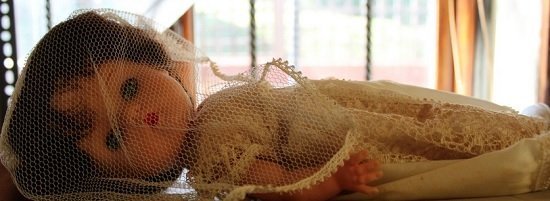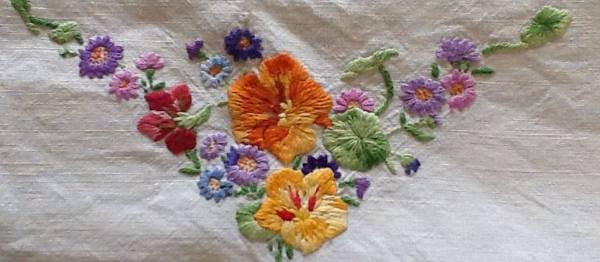“Were composition dolls made in the 19th century?” a woman asked at a show several years ago. The exhibitor shrugged his shoulders and said that he didn’t know. He was displaying the wax dolls he had made, and probably didn’t know about antique dolls and the various substances of which they were made.
However, the exhibitor was English, and England made a great quantity of composition dolls in the last century. This seems to make a point that many people in the field nowadays do not know their history, and history adds to the spice and fun of doll collecting.
Composition dolls and dolls made of papier-mache tread a fine line, being first cousins, at most. Papier-mache is a French word meaning ‘chewed paper.’ When combined with water and boiled or soaked, the paper becomes very malleable and can be pressed into molds. Paste and other ingredients added to the formula gave the substance more durability.
The word “composition” is a misnomer when it comes to a particular doll type, since the word itself means “a mixture of substances.” Being such, it includes papier-mache as well. Hence the confusion among collectors when trying to differentiate one from the other.
This writer has always been partial to the vintage composition and papier-mache dolls, both those with the bald heads and wigs and the molded and rare hairdo types. I have found that the composition heads have endured better than those made of papier-mache. The former being harder and heavier in weight and with a thicker coat of protective varnish which gaves them a more glossy finish. The papier-mache heads were also varnished, but many cracked or crazed due to the lack of ingredients used in the composition formulas. Some of the old mache heads were not varnished, giving them a more natural “mat” look, but making them more vulnerable to the deteriorating effects of moisture and handling (being very easily soiled and impossible to clean).
In olden times, the factory workers used white or brown paper by shredding it in a carding machine. When cooked, whiting (ground chalk), plaster, and glue were added. If the dollmaker wanted a heavier head, he added mattress flock, cotton waste, kapok, and rye flour for adhesion. Sulphated alum or potash was also added to the mixture to keep the fragile heads from crumbling. Snuff, which was referred to as “nicotine dust,” or juice from tobacco leaves or from colocynth (the bitter apple gourds) was applied to the various formulas to discourage rats or insects like roaches and crickets from consuming the heads.
Composition dolls were made durable by adding glue and sawdust to the many “secret” formulas. In the 1920s and 1930s (especially in the 1930s) many of the cheaper-priced compo dolls were made solely of sawdust and glue. These were the very dolls that crumbled, warped, and cracked, or fell prey to tiny wood worms which destroyed them from the insides. (I’ve restored these dolls and have found dead worms inside.)
Composition dolls were made by many early firms: Cuno & Otto, Dressel, Germany, being one of the first known. Kestner in the early 19th century made both composition dolls and those of papier-mache. His catalogs of the period illustrated Milliners’ Models. Douglas & Hamer, London, England, made compo dolls ca. 1843, as did James Brogden, London, in the same time period. Thomas Hatch and his wife, Sarah, who succeeded him, made dolls from 1848 to 1891. (Wax dolls were also made by these early dollmakers.)
Henry Wicks, London, made compo dolls from 1853 to 1865, and James Wicks, London, made compo dolls from 1853 to 1854, but not at the same address, although related. Richard Buste, France, took out a patent in 1853 for a compo formula consisting of plaster, lime paste, whiting, tallow, and stearic wax. He called himself Monsieur Richard. In 1856, Thomas Bluett, England, made compo and wax dolls.
Ludwig Greiner, Philadelphia, was issued a US patent (#19770) on March 30, 1858, for dolls’ heads made with this papier-mache formula: rye flour paste, white paper, glue, dry whiting, and a linen cloth for strengthening the features from within (nose). (Years ago I visited Philadelphia, and found a parking lot on the site where the famous Greiner factory once stood. Such a pity that landmarks are razed to make room for the lowly automobile.)
Composition dolls continued to be made in England, Germany, and France (and other countries) throughout the 19th century, being considered a sturdy, but secondary doll, for the middle class or poor folks. They gleaned the height of popularity, however, in the next century, appealing both to the poor and rich.






